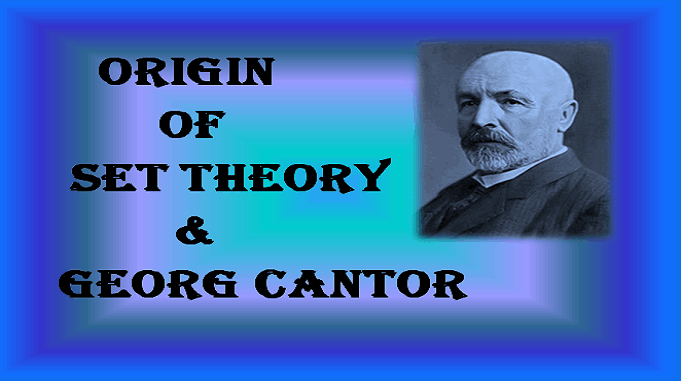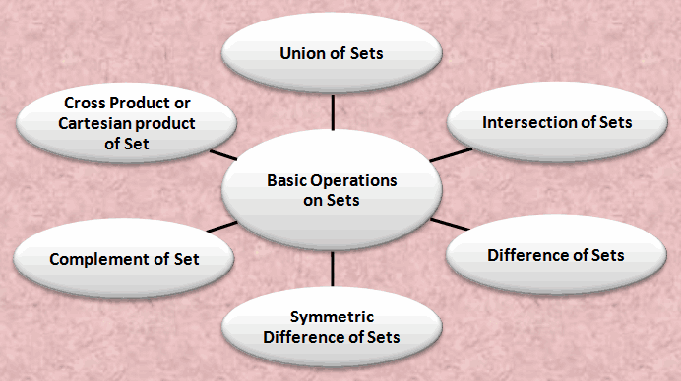
Origin & History of Set Theory and Georg Cantor
The Origin of Set Theory:
The founder of Set Theory is Georg Cantor, a German mathematician and logician. Between 1874 and 1897, Georg Cantor (1845-1918), a German mathematician and logician, introduced the concept of “Theory of sets” or “Set Theory.” Georg Cantor became known as the Father of set theory.
He encountered sets during working on “Problems on Trigonometric Series”, which have become among the most fundamental and essential mathematical concepts.
This theory developed from his studies on certain problems related to some types of infinite sets of real numbers.
Cantor defined a set as,
“A set is a collection of definite, distinguishable objects of perception or thought conceived as a whole.” The objects are known as elements or members of the set.
It will be hard to explain other concepts such as sequences, relations, functions, geometry, probability, etc. without understanding sets.
Georg Cantor, The Founder of Set Theory:
Georg Cantor (1845-1918) spent most of his life in Germany, despite being born in St. Petersburg (Russia), where his parents had relocated from Denmark.
From an early age, the infinite attracted his interest. In his thirties, he published articles that helped him develop his set theory. In these articles, he formalised numerous ideas regarding mathematical infinity.
Until the end of the nineteenth century, no mathematician had been able to describe the infinite beyond the idea that it was an absolutely unachievable value. Georg Cantor was the first to speak completely about such an abstract topic.
He did so through the development of set theory, which led him to the unexpected conclusion that infinities of various sizes exist. When his unexpected ideas were rejected, Cantor started doubting himself and suffered consecutive nervous breakdowns until he dying interned in a hospital.
Without his innovative insights, modern mathematics could not be understood today.
Georg Cantor and the Development of Set Theory:
According to Cantor, sets are collections of objects with finite or infinite elements. For example, the set of fingers of a hand has finite elements (thumb, index finger, middle finger, ring finger, and pinky), whereas there are infinite elements in the set of natural numbers (N = 0, 1, 2, 3, 4, 5, 6,…).
Cantor defined cardinal as the number of elements in a set: For example, the cardinal of a set of fingers of a hand is 5, while the cardinal of a set of natural numbers is infinite (∞).
However, Cantor noticed that not all infinite sets are equal in size, there are infinite sets of various cardinals.
Despite the fact that the theory of a set had been used indirectly since the beginnings of mathematics, which extended to Aristotle’s ideas, it was confined to everyday finite sets. The “infinite” was kept entirely separate, in contradistinction. It was thought to be mostly a subject of philosophical conversation rather than mathematical discussion.
Cantor, on the other hand, proved that, just as there are different finite sets, there are infinite sets of different sizes, some countable and some uncountable.
He refined his set theory during the 1880s and 1890s. He defined power sets and well-ordered sets, as well as introduced the concepts of cardinality and ordinality and the arithmetic of infinite sets.
According to Cantor’s theorem, the power set of any set A (power set is the set of all subsets of set A) has a strictly larger cardinality than A itself. More especially, a countably infinite set’s power set is uncountably infinite.
(Source – Various books of college library)
Copyrighted Material © 2019 - 2024 Prinsli.com - All rights reserved
All content on this website is copyrighted. It is prohibited to copy, publish or distribute the content and images of this website through any website, book, newspaper, software, videos, YouTube Channel or any other medium without written permission. You are not authorized to alter, obscure or remove any proprietary information, copyright or logo from this Website in any way. If any of these rules are violated, it will be strongly protested and legal action will be taken.



Be the first to comment